[Editor’s Note: Mad Scientist Laboratory welcomes returning guest blogger LTC Steve Speece with another insightful post, this time addressing how Great Power Conflict in the Twenty-first Century requires us to re-think how we mobilize the Nation’s talent to successfully compete and win against all adversaries. Army Mad Scientist has previously acknowledged that the “United States’ advantage lies in its people’s ability to innovate.” In today’s post, LTC Speece examines U.S. Auxiliary Forces, their role in unconventional warfare, and how our adversaries are developing and employing them. Our national security policy makers should re-examine and tailor legacy U.S. Auxiliary Force roles to support the nation when engaged in Great Power Conflict, and, where necessary, create entirely new Auxiliary Force organizations — expanding volunteer service opportunities to those otherwise disqualified from enlisting in the Active or Reserve Components. Read his compelling case why Auxiliary Force organizations harnessing the breadth of this Nation’s talent are essential to winning Great Power Conflict!]
Neglecting a Competitive Advantage
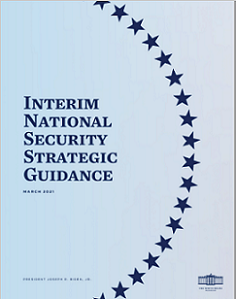 In March 2021, the White House’s Interim National Security Strategic Guidance (NSS) directed departments and agencies to renew “enduring advantages so that we can meet today’s challenges from a position of strength.” However, the Department of Defense is failing to envision capitalizing on what is probably the United States’ greatest competitive advantage — an enormous service economy with a skilled and adaptable workforce.
In March 2021, the White House’s Interim National Security Strategic Guidance (NSS) directed departments and agencies to renew “enduring advantages so that we can meet today’s challenges from a position of strength.” However, the Department of Defense is failing to envision capitalizing on what is probably the United States’ greatest competitive advantage — an enormous service economy with a skilled and adaptable workforce.
The COVID-19 pandemic forced many private and public institutions to adopt labor market innovations including Working from Home (WFH) arrangements, reliance on what is now commonly termed the gig economy, and introduced many to digital currencies and cashless payment mechanisms. The current U.S. Auxiliary Force architecture fails to capitalize on these innovations, neglecting to provide volunteer service opportunities to those disqualified for military service, or integrate Auxiliary Forces into Great Power Conflict-relevant missions  including Homeland Defense and Unconventional Warfare. According to JP 3-27 Homeland Defense, auxiliary organizations include the USAF Auxiliary [Civil Air Patrol], USCG Auxiliary, Military Auxiliary Radio System, and State Defense Forces. Conspicuously absent in any Joint doctrine reference to auxiliary architecture is the U.S. Selective Service System.
including Homeland Defense and Unconventional Warfare. According to JP 3-27 Homeland Defense, auxiliary organizations include the USAF Auxiliary [Civil Air Patrol], USCG Auxiliary, Military Auxiliary Radio System, and State Defense Forces. Conspicuously absent in any Joint doctrine reference to auxiliary architecture is the U.S. Selective Service System.
Few defense policies are so consistently problematic to U.S. civil-military relations as the possibility of forced conscription. In September 2021, Congress passed a National Defense Authorization Act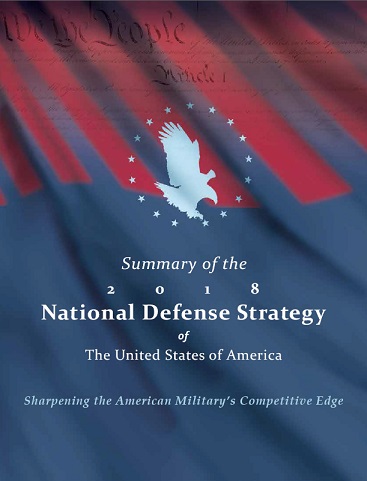 , including the first major reform of the Selective Service System since 1980 which expanded registration requirements to all Americans between the ages of 18 and 25, regardless of biological sex. Interestingly, this expansion of the Selective Service System arrives on the heels of unsuccessful attempts to eliminate the agency in 2019 and 2020, and the near irrelevance of the institution to the 2018 National Defense Strategy.
, including the first major reform of the Selective Service System since 1980 which expanded registration requirements to all Americans between the ages of 18 and 25, regardless of biological sex. Interestingly, this expansion of the Selective Service System arrives on the heels of unsuccessful attempts to eliminate the agency in 2019 and 2020, and the near irrelevance of the institution to the 2018 National Defense Strategy.
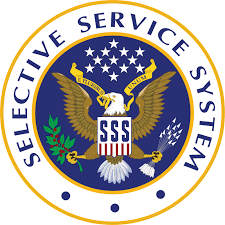 The Selective Service System defines itself as the third tier of national defense, behind the active duty military and reserve components. Its plan to provide this military manpower under current law entails the use of state lottery-style clear plexiglass tanks filled with percolating ping pong balls on which birth dates of registrant cohorts are randomly selected. This seemingly archaic protocol blinded to individual human capital is an artifact of the Selective Service System’s Cold War origins. It was neglected and avoided during the Global War on Terror, and reflects an urgent need to modernize the legacy U.S. Auxiliary Force architecture to provide relevance in an era of renewed Great Power Competition and Conflict.
The Selective Service System defines itself as the third tier of national defense, behind the active duty military and reserve components. Its plan to provide this military manpower under current law entails the use of state lottery-style clear plexiglass tanks filled with percolating ping pong balls on which birth dates of registrant cohorts are randomly selected. This seemingly archaic protocol blinded to individual human capital is an artifact of the Selective Service System’s Cold War origins. It was neglected and avoided during the Global War on Terror, and reflects an urgent need to modernize the legacy U.S. Auxiliary Force architecture to provide relevance in an era of renewed Great Power Competition and Conflict.
The Deterrent Value of Auxiliary Force Signals
Apart from the mass mobilization of the U.S. Selective Service System, how can the modernization of existing or the creation of entirely new non-combatant volunteer auxiliary forces deter an attack on the homeland by Russia or China? These legacy institutions were envisioned to develop and  maintain a pool of skilled civilians for the military services to draw upon in the event of national mobilization, provide non-combat direct support to the military services, and to provide volunteer consequence management services in the event of an attack on the homeland as part of the broader state and federal Civil Defense architecture.
maintain a pool of skilled civilians for the military services to draw upon in the event of national mobilization, provide non-combat direct support to the military services, and to provide volunteer consequence management services in the event of an attack on the homeland as part of the broader state and federal Civil Defense architecture.
The National Security Resources Board’s report on U.S. Civil Defense policy in 1950 specifically cited the role of consequence management preparations in strategic nuclear deterrence. During the early years of the Cold War, the credibility of nuclear retaliation was contingent upon the ability of the  homeland to endure a devastating nuclear attack and restore order in its aftermath. While Civil Defense-promoted student “duck and cover” drills were later criticized for the questionable protection offered by the tactic and the prospect of nuclear war terrifying children, these measures signaled to the Soviet Union that the United States was preparing to endure the kind of nuclear attack that put non-combatants and even children at risk.
homeland to endure a devastating nuclear attack and restore order in its aftermath. While Civil Defense-promoted student “duck and cover” drills were later criticized for the questionable protection offered by the tactic and the prospect of nuclear war terrifying children, these measures signaled to the Soviet Union that the United States was preparing to endure the kind of nuclear attack that put non-combatants and even children at risk.
The role of Civil Defense preparations in strategic deterrence remained prominent in U.S. National Security policy until 1963, when President Kennedy de-emphasized its importance relative to massive nuclear force expansion ensuring the survival of retaliatory capability. Auxiliary forces since that time broadened their missions away from specifically nuclear civil defense to general consequence management services, including natural disaster response or search and rescue. Since the creation of the Federal Emergency Management Agency (FEMA)  in 1979, DoD auxiliaries have provided support to civil authorities in domestic disaster response efforts.
in 1979, DoD auxiliaries have provided support to civil authorities in domestic disaster response efforts.
The March 2021 Interim-NSS directed departments and agencies to “reduce the role of nuclear weapons in our national security strategy,” despite the rapid nuclear expansion of our adversaries and emerging threats to the homeland. The Department of Defense’s answer to this strategic challenge is the concept of ‘integrated deterrence,’ which broadens the concept of deterrence across warfighting domains and elements of national power. Emerging threats to the homeland will lack symmetric response options implying a need for Auxiliary Forces to return to strategic deterrent roles in signaling domestic resiliency.
Auxiliary Forces’ Role in Unconventional Warfare
 Special Operations Command Europe’s 2020 Resistance Operating Concept (ROC) noted a key challenge in planning for Unconventional Warfare against occupying Great Power adversaries was the need for smaller states to adopt a whole-of-society approach, also known as Total Defense. U.S. Special Operations Forces need resilient and survivable irregular partners to enable in occupied areas. According to the ROC, a small state ally needs to plan for and develop such irregular partner forces now, in order for the prospect of prolonged Unconventional Warfare to have any deterrent effect against an adversary with superior conventional military capabilities.
Special Operations Command Europe’s 2020 Resistance Operating Concept (ROC) noted a key challenge in planning for Unconventional Warfare against occupying Great Power adversaries was the need for smaller states to adopt a whole-of-society approach, also known as Total Defense. U.S. Special Operations Forces need resilient and survivable irregular partners to enable in occupied areas. According to the ROC, a small state ally needs to plan for and develop such irregular partner forces now, in order for the prospect of prolonged Unconventional Warfare to have any deterrent effect against an adversary with superior conventional military capabilities.
Generating auxiliary forces by conscription to supplement conventional force formations commonly remains the default Total Defense plan for smaller U.S. allies and partners, including South Korea, Israel, and the Baltic States. However, as Switzerland noted in its Cold War Total Defense plan, maintaining a volunteer auxiliary force separate from conventional military and formal government control protects it from necessary surrender in the event a military occupation coerces a capitulation agreement. In this example, the greatest limitation of 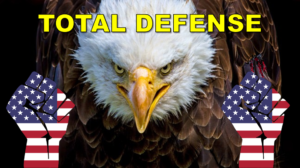 volunteer auxiliary forces in peacetime, their lack of formal bureaucratic control, becomes a key advantage in the post-occupation resistance phase of Total Defense war plans.
volunteer auxiliary forces in peacetime, their lack of formal bureaucratic control, becomes a key advantage in the post-occupation resistance phase of Total Defense war plans.
A survivable underground resistance organization requires more than combatants. Auxiliary Forces can develop applicable capabilities in peacetime applicable to both strategic attack resiliency and Unconventional Warfare. An auxiliary force of information technology experts can establish secure mesh networks for resilient communication. Aviation enthusiasts and drone hobbyists who practice post-natural disaster Incident Awareness and Assessment (IAA) can also provide surveillance and reconnaissance in urban areas. Rural auxiliaries can maintain small electricity generators (e.g., from renewable sources like solar or wind power) to support continuity of operations in the event of essential service disruption.
Adversaries’ Auxiliary Force Development
How do Russia and China approach the roles of their own Auxiliary Forces and what lessons can be learned? As of 2017, Beijing employed up to 2 million Chinese internet users to post up to 448 million fabricated social media posts per year . This auxiliary force engaged in information operations is known as the ’50c Party’ after the standard payment of 0.5 Yuan per post — less than $0.08 USD at current exchange rates. While the 50c Party is likely not responsible for every pro-Beijing post or comment on the internet, the introduction of micropayment incentives to a receptive volunteer workforce allows China to rapidly scale up capacity to respond to information operations challenges in the cyber domain.
. This auxiliary force engaged in information operations is known as the ’50c Party’ after the standard payment of 0.5 Yuan per post — less than $0.08 USD at current exchange rates. While the 50c Party is likely not responsible for every pro-Beijing post or comment on the internet, the introduction of micropayment incentives to a receptive volunteer workforce allows China to rapidly scale up capacity to respond to information operations challenges in the cyber domain.
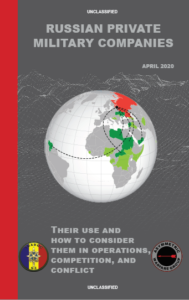
Moscow’s Hybrid Warfare doctrine expanded the use of separatist auxiliary forces in client states, clandestine enablers, and Private Military Companies (PMCs) like Wagner Group. According to open sources, Russia’s Wagner Group uses short term and low cost private security contracts to grow and sustain its mercenary forces deployed globally. A BBC investigation claimed Wagner deliberately seeks prospective recruits otherwise not qualified for conventional military service due to criminal backgrounds. This force generation strategy extends service opportunities to otherwise qualified Russians without diverting potential manpower from formal Russian military service.
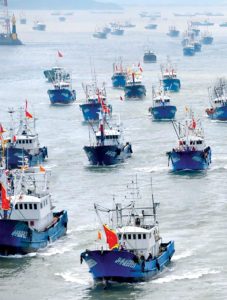
In the maritime domain, Beijing’s expanded use of its Maritime Militia further illustrates how auxiliary forces designed to capitalize on competitive advantages like the world’s largest fishing fleet can serve a role complementary to conventional forces in Great Power Conflict. While compliance with Beijing’s civil-military fusion law is not voluntary, it does provide incentives for active participation, including fuel subsidies. The Maritime Militia provides Beijing options to assert sovereignty claims in contested waters that its regional neighbors are challenged to match. In the event of a conflict, the Maritime Militia’s role would probably expand to reconnaissance and minelaying which they are trained to conduct.
Expanding Opportunities for Volunteer Service
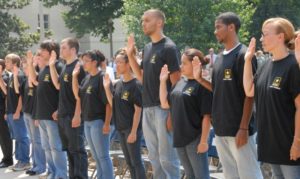 National security policy makers are at times alarmed by the declining number of young Americans deemed eligible for military service. In 2009, a group of retired General Officers published a report Ready, Willing, and Unable to Serve, identifying several drivers of declining eligibility for those young people willing to enlist, including poor health, lower education, and past involvement in criminal activities. However, rather than adapting these barriers-to-entry for volunteer service to reflect the changing nation we serve, senior Service Leaders have seemingly doubled-down on a force generation model that cannot quickly scale up in a major war without inefficient and coercive policies which potentially put U.S. civil-military relations at risk.
National security policy makers are at times alarmed by the declining number of young Americans deemed eligible for military service. In 2009, a group of retired General Officers published a report Ready, Willing, and Unable to Serve, identifying several drivers of declining eligibility for those young people willing to enlist, including poor health, lower education, and past involvement in criminal activities. However, rather than adapting these barriers-to-entry for volunteer service to reflect the changing nation we serve, senior Service Leaders have seemingly doubled-down on a force generation model that cannot quickly scale up in a major war without inefficient and coercive policies which potentially put U.S. civil-military relations at risk.
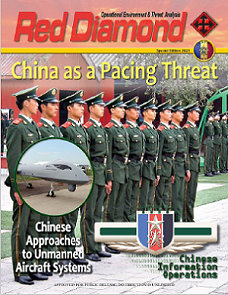
If publicly available information is accurate, the rapidly modernizing Chinese People’s Liberation Army maintains approximately 2 million personnel in regular forces. In a prolonged Great Power Conflict against an adversary of that capacity, the Joint Force cannot afford to disregard or misallocate any potential human resources. If conscription through the Selective Service System must remain a policy option for such contingencies, the American public must be confident that national security policy makers will only call upon such measures after all voluntary sources of manpower are exhausted.
National security policy makers should consider new roles and incentive structures to make the U.S. Auxiliary Force architecture credibly employable and relevant to Great Power Conflict. It is possible that some legacy Auxiliary Force institutions can be reformed to that end, but cost-benefit analysis might reveal opportunities to create entirely new Auxiliary Force organizations. To the extent possible under current law, Auxiliary Forces should expand volunteer service opportunities to those disqualified from otherwise enlisting in the Active or Reserve Components. The issue of who can serve and how remains of critical importance; civil-military relations with the U.S. Auxiliary Forces should no longer be deprecated as hobbyists, but elevated to recognize their potential role in Great Power Conflict.
If you enjoyed this post, check out LTC Steve Speece‘s equally insightful Alternate Futures 2050: A Collection of Fictional Wartime Vignettes
… as well as the following related content:
The Operational Environment (2021-2030): Great Power Competition, Crisis, and Conflict
The Case for Restructuring the Department of Defense to Fight in the 21st Century, by LTC Christopher Heatherly
Global Entanglement and Multi-Reality Warfare and associated podcast, with COL Stefan Banach (USA-Ret.)
Going on the Offensive in the Fight for the Future and associated podcast, with Former Undersecretary of the Navy James F. “Hondo” Geurts and Dr. Zachary S. Davis
Young Minds on Competition and Conflict
The Convergence: Innovating Innovation with Molly Cain and associated podcast
Sub-threshold Maneuver and the Flanking of U.S. National Security, by Dr. Russell Glenn
“Once More unto The Breach Dear Friends”: From English Longbows to Azerbaijani Drones, Army Modernization STILL Means More than Materiel and China and Russia: Achieving Decision Dominance and Information Advantage by Ian Sullivan
About the Author: Steve Speece is an active duty U.S. Army officer currently assigned to the Joint Staff J2 as an Executive Intelligence Briefer to the Chairman’s Special Staff. All opinions are his own and do not reflect any official statement of the Joint Staff, the U.S. Army, or the Defense Intelligence Agency.
Disclaimer: The views expressed in this blog post do not necessarily reflect those of the Department of Defense, the Joint Staff, Defense Intelligence Agency, Department of the Army, Army Futures Command (AFC), or U.S. Army Training and Doctrine Command (TRADOC).




I am personally a strong advocate of creating a force, the US Auxiliary Force having a force of millions of American of all ages involved with our National Security Agenda. I am a retired school teacher and I tried several times in the reserve components of the Armed Forces, only to be rejected on a medical condition that is being actively controlled. I don’t need to be an elite member of Special Forces to be an effective member of the total force. Give me a chance along with so many others to serve our country. I am 62 years of age and still want to serve in a capacity that meets my age, age and education. I would join a US Auxiliary Force today, if given an opportunity.
Phillip G. Ryman, MS
I always wanted to join the military, but due to health issues, I couldn’t. I found out about the Coast Guard Auxiliary when I was in my mid forties. I wish I had known back in my teens. I love the opportunity the CG Auxiliary gives.
I hope I still be of use when needed.
Semper Paratus
Aux Boren